A conducting rod of length l is moving in a transverse magnetic field of strength B with veocity v. The resistance of the rod is R. The current in the rod is
BlvR
Blv
zero
B2v2l2R
The correct Answer is:C
To find the current in a conducting rod of length l moving in a transverse magnetic field of strength B with velocity v, we can follow these steps:
1. Understanding the Setup:
- We have a conducting rod of length l moving with a velocity v in a magnetic field B.
- The motion of the rod is perpendicular (transverse) to the direction of the magnetic field.
2. Induced EMF Calculation:
- According to Faraday's law of electromagnetic induction, when a conductor moves through a magnetic field, an electromotive force (EMF) is induced across the ends of the conductor.
- The formula for the induced EMF (E) in a rod moving in a magnetic field is given by:
E=B⋅l⋅v
- Here, B is the magnetic field strength, l is the length of the rod, and v is the velocity of the rod.
3. Current Calculation:
- The current (I) induced in the rod can be calculated using Ohm's law, which states that current is equal to the induced EMF divided by the resistance (R) of the rod.
- Therefore, the current can be expressed as:
I=ER=B⋅l⋅vR
4. Final Expression:
- Thus, the current in the rod is given by:
I=B⋅l⋅vR
Final Answer:
The current in the rod is I=B⋅l⋅vR.
---
- We have a conducting rod of length l moving with a velocity v in a magnetic field B.
- The motion of the rod is perpendicular (transverse) to the direction of the magnetic field.
- According to Faraday's law of electromagnetic induction, when a conductor moves through a magnetic field, an electromotive force (EMF) is induced across the ends of the conductor.
- The formula for the induced EMF (E) in a rod moving in a magnetic field is given by:
E=B⋅l⋅v
- Here, B is the magnetic field strength, l is the length of the rod, and v is the velocity of the rod.
- The current (I) induced in the rod can be calculated using Ohm's law, which states that current is equal to the induced EMF divided by the resistance (R) of the rod.
- Therefore, the current can be expressed as:
I=ER=B⋅l⋅vR
- Thus, the current in the rod is given by:
I=B⋅l⋅vR
The current in the rod is I=B⋅l⋅vR.
Topper's Solved these Questions
- BOOK - DC PANDEY ENGLISHCHAPTER - ELECTROMAGNETIC INDUCTIONEXERCISE - Taking it together119videos
ELECTROMAGNETIC INDUCTION
- BOOK - DC PANDEY ENGLISHCHAPTER - ELECTROMAGNETIC INDUCTIONEXERCISE - Medical entrance special format questions17videos
ELECTROMAGNETIC INDUCTION
- BOOK - DC PANDEY ENGLISHCHAPTER - ELECTROMAGNETIC INDUCTIONEXERCISE - Example71videos
ELECTROMAGNETIC INDUCTION
- BOOK - DC PANDEY ENGLISHCHAPTER - CURRENT ELECTRICITYEXERCISE - Medical entrances gallery97videos
CURRENT ELECTRICITY
- BOOK - DC PANDEY ENGLISHCHAPTER - ELECTROMAGNETIC WAVESEXERCISE - Sec C22videos
ELECTROMAGNETIC WAVES
Similar Questions
A metal rod of length l cuts across a uniform magnetic field B with a velocity v. If the resistance of the circuit of which the rod forms a part is r, then the force required to move the rod is
View SolutionA conducting rod of length / is rotating about point Pin a uniform transverse magnetic field B0 as shown in the figure. If angular speed of the rod is ω0 then the magnitude of induced emf across the ends of the rod will be (PA=2l3andPB=l3)
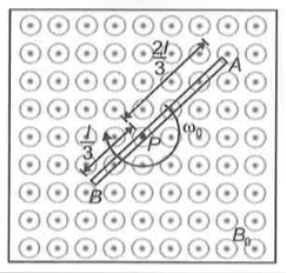 View Solution
View SolutionA uniform conducting rod of length I is moving with speed v0 in a uniform transverse magnetic field B0 as shown in figure. The emf developed across the two ends of the rod will be
 View Solution
View SolutionA glass rod of length l moves with velocity v in a uniform magnetic field B. What is the e.m.f induced in the rod?
View SolutionA rod of length l is moving velocity v "in magnetic field" b as seen in . Find the emf induced in all three cases.
(a) View Solution
View SolutionA conducting circular loop of radius a and resistance per unit length R is moving with a constant velocity v0 , parallel to an infinite conducting wire carrying current i0. A conducting rod of length 2a is approaching the centre of the loop with a constant velocity v02 along the direction 2 of the current. At the instant t=0, the rod comes in contact with the loop at A and starts sliding on the loop with the constant velocity. Neglecting the resistance of the rod and the self-inductance of the circuit, find the following when the rod slides on the loop.
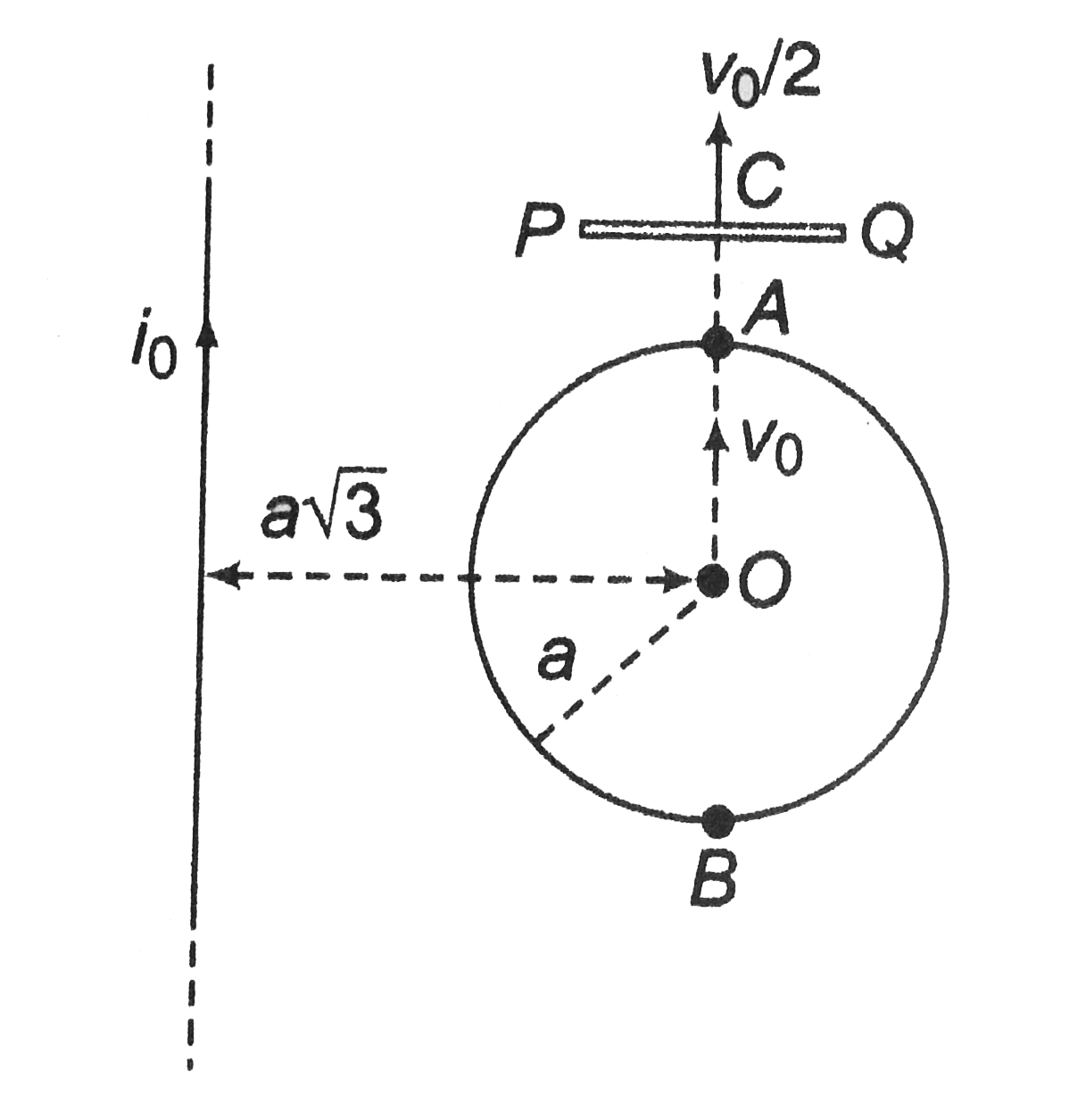
(a) The current through the rod when it is at a distance of (a2) from the point A of the loop.
(b) Force required to maintain the velocity of the rod at that instant.View SolutionA conducting rod AB of length l is projected on a frictionless frame PSRQ with velocity v0 at any instant. The velocity of the rod after time t is
View SolutionA small conducting rod of length l, moves with a uniform velocity v in a uniform magnetic field B as shown in fig __
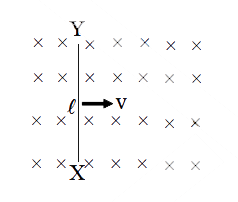
A. Then the end X of the rod become positively charged
B. The end Y of the rod become positively charged
C. The entire rod is unevenly charged
D. The rod become hot due to joule heatingView SolutionA conducting rod of length 1 is moving on a horizontal smooth surface. Magnetic field in the region is vertically downward and magnitude B0. If centre of mass (COM) of the rod is translating with velocity v0 and rod rotates about COM with angular velocity v0/l, then potential difference between points O and A will be
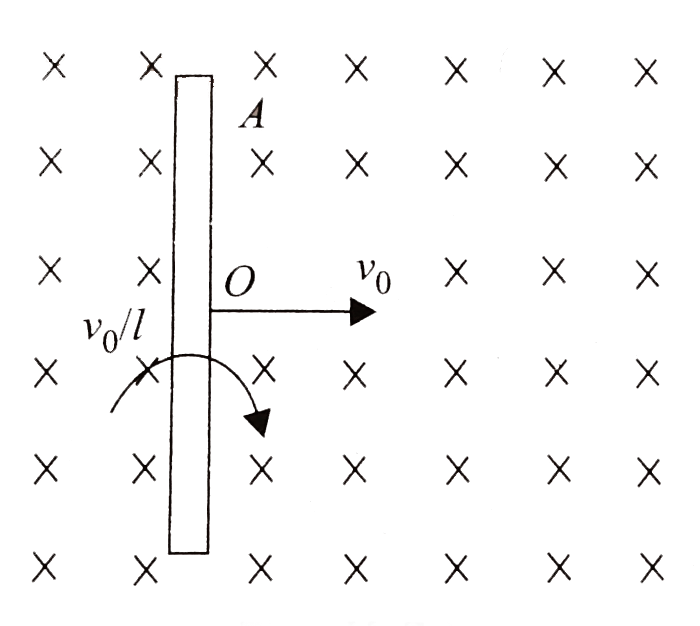 View Solution
View SolutionA conducting rod AC of length 4l is rotated about point O in a uniform magnetic field →B directed into the plane of the paper. AO=landOC=3l. Find VA−VC.
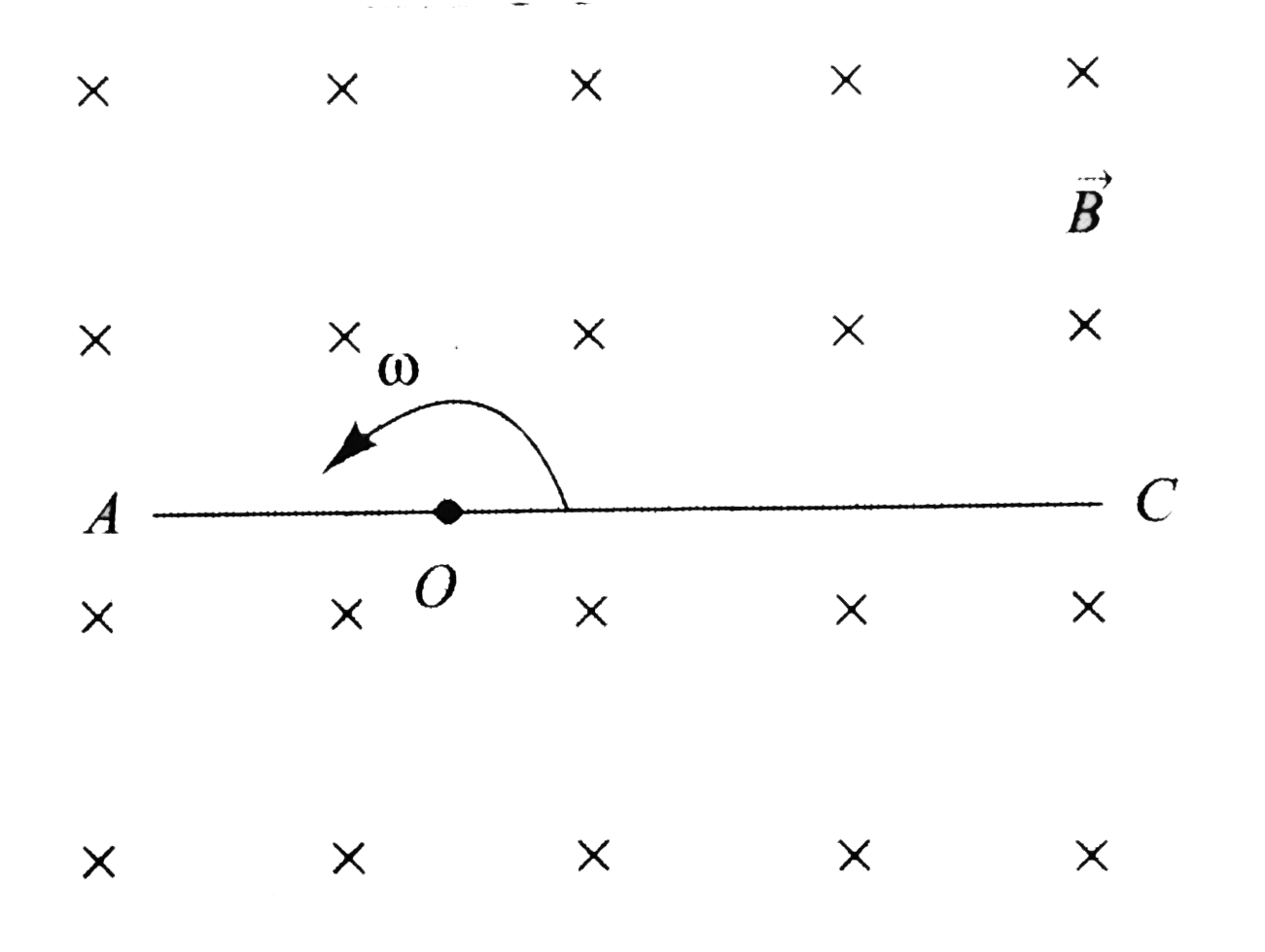 View Solution
View Solution

